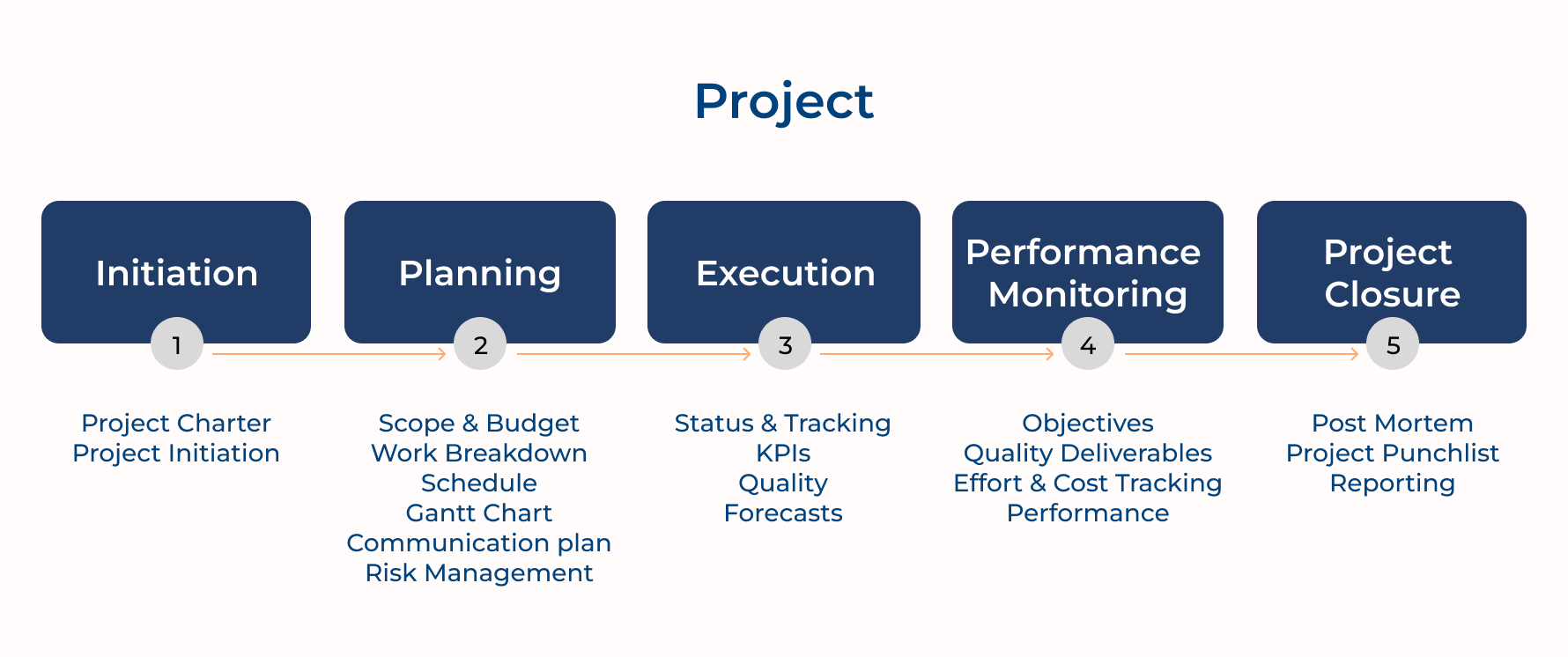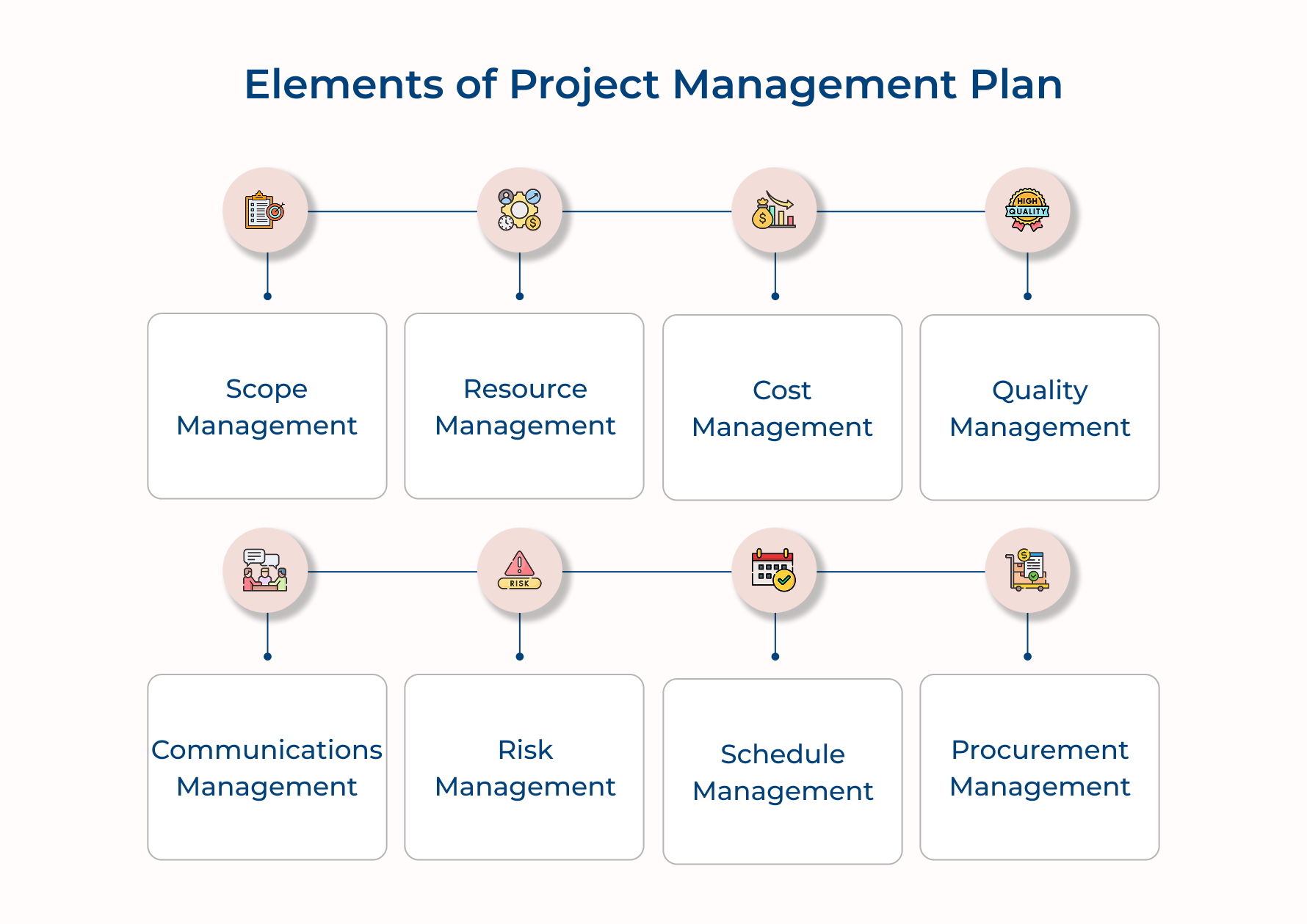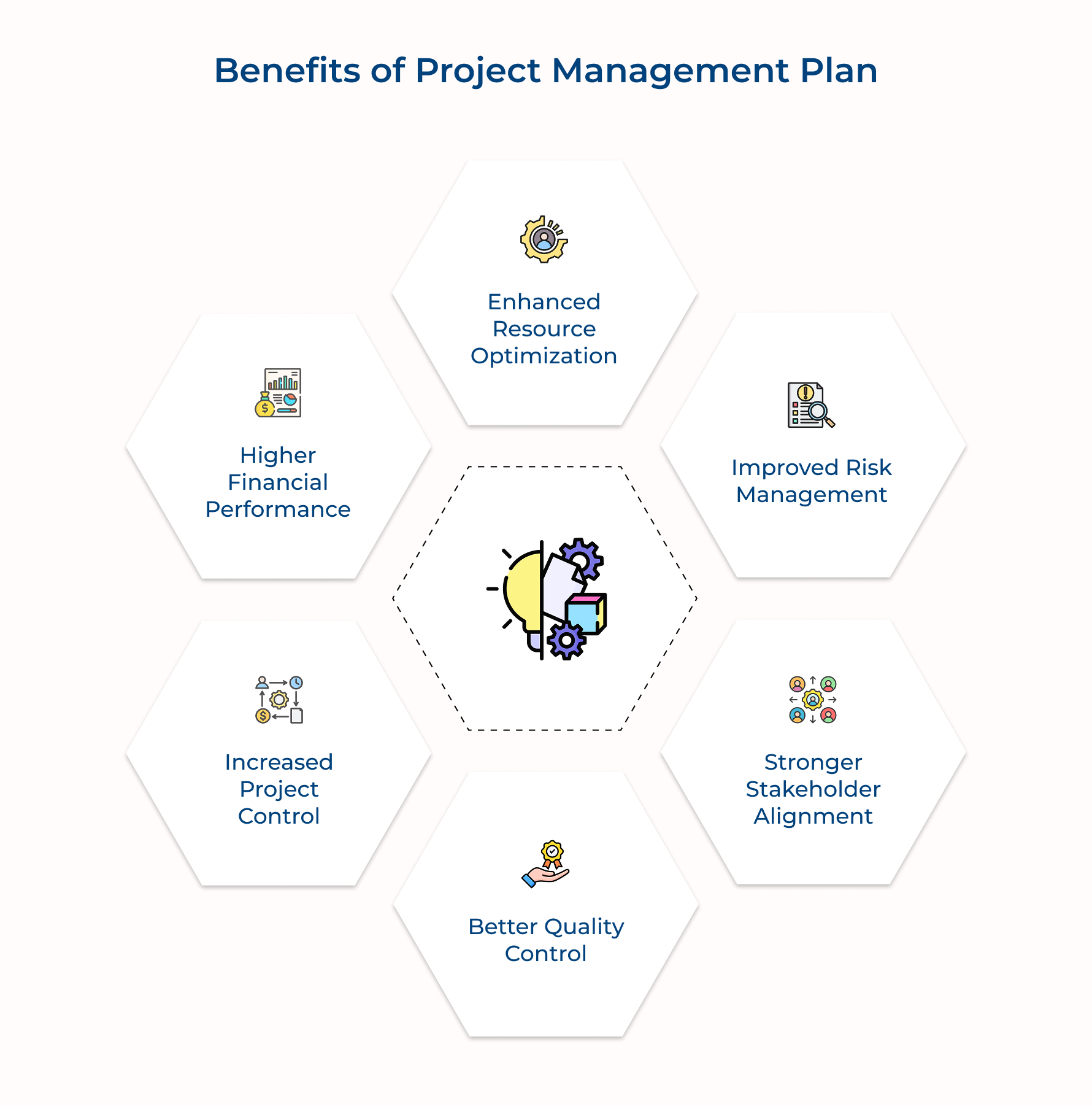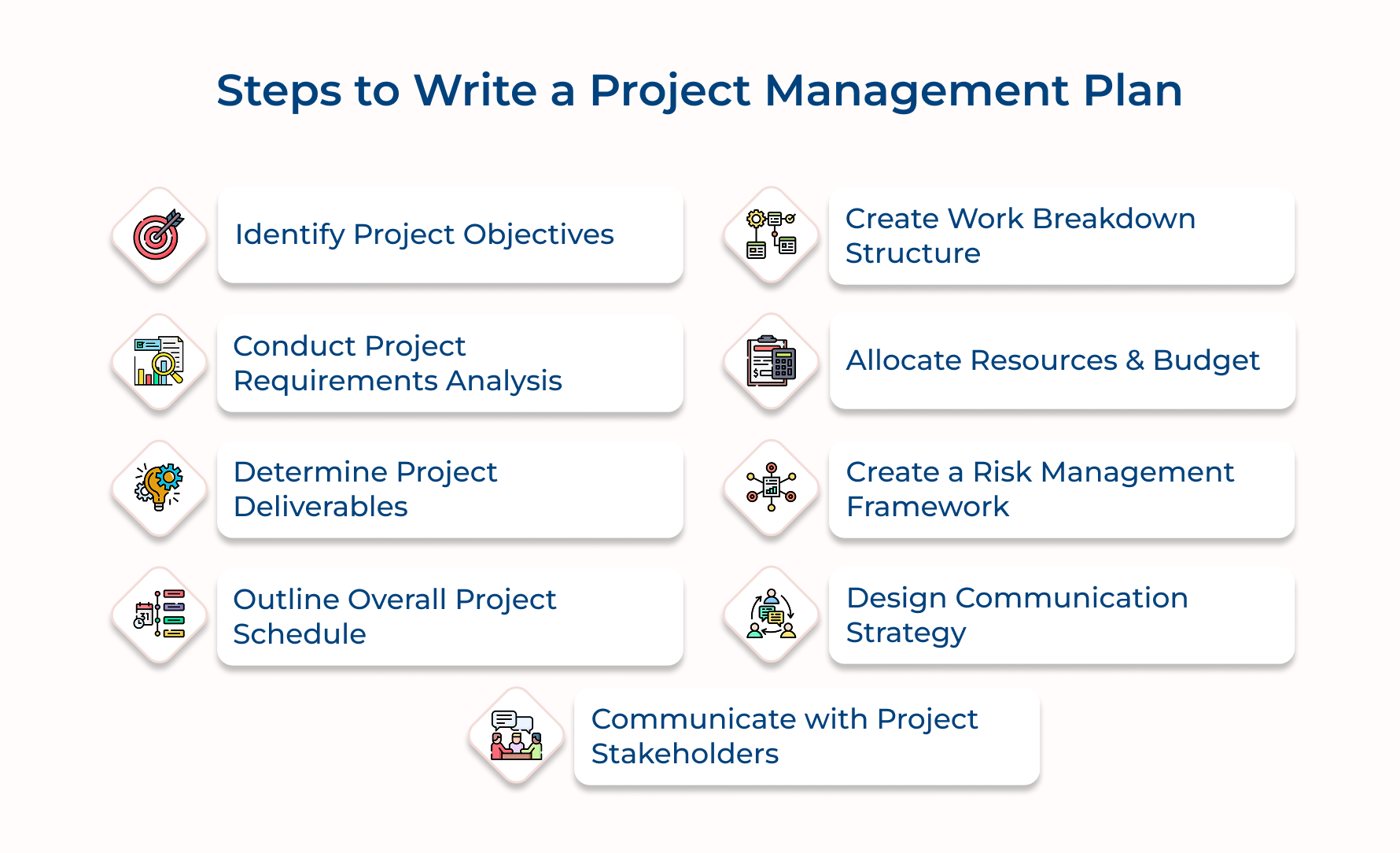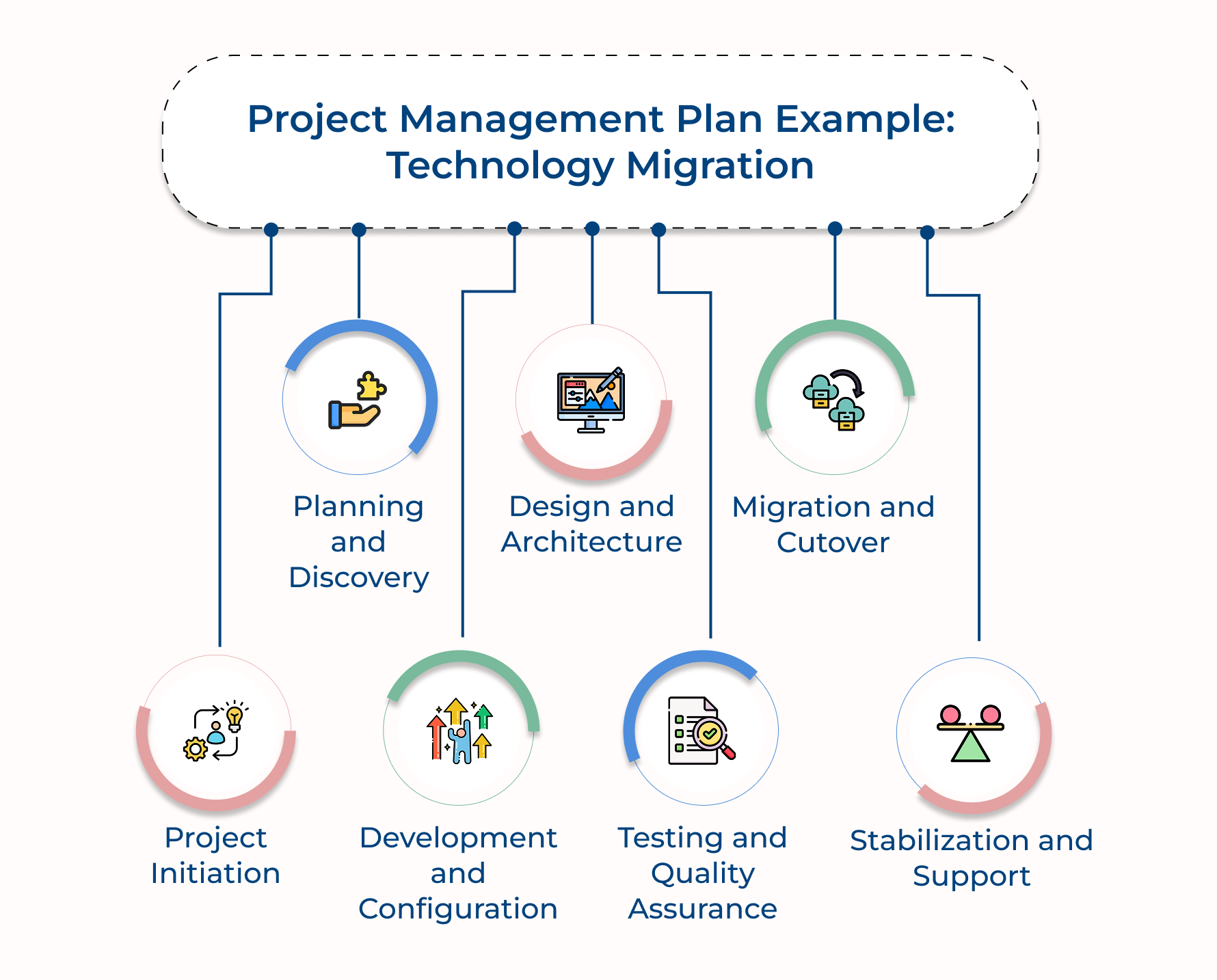9 Simple Steps to Write a Robust Project Management Plan
- What is a Project Management Plan?
- Key Elements of Project Management Plan
- Benefits of Effective Project Management Plan (PMP)
- How to write a Project Management Plan: 9 Steps
- Project Management Plan Example
- Common Mistakes to Avoid When Creating a Project Management Plan
- Execute Project Planning with Kooper’s PSA Platform
- FAQs about Project Management Plan

Key Highlights:
- Resource management plans ensure the right skills are assigned at the right time to maximize team productivity.
- Align stakeholder needs with deliverables through structured gathering and prioritization of requirements.
- A project management plan optimizes resources to prevent bottlenecks, maximize billable hours, and improve overall project profitability.
As services grow more complex and client expectations rise, traditional project planning just doesn’t cut it anymore. Project leaders often face the tough task of balancing resource optimization, managing risks, and delivering quality—while keeping margins healthy.
A solid project management plan (PMP) is always helpful in situations like these. It provides a clear framework to streamline delivery, optimize resources, and improve project success rates.
Let’s explore actionable tips to refine your project planning. From defining clear scopes to optimizing resources and managing risks effectively, we’ll share insights as well as real-world examples to help you succeed.
What is a Project Management Plan?
A project management plan (PMP) serves as a comprehensive roadmap that guides project execution, monitoring, and closure. In professional services and consulting environments, PMPs function as living documents that outline strategies, methodologies, as well as resource allocations required to achieve client objectives.
According to PMI, organizations deploying standardized project management practices are projected to achieve 73% higher project success rates.
A well-crafted PMP empowers project managers to make informed decisions, adjust course when needed, and maintain alignment between client expectations as well as project outcomes.
The project management plan aims to:
- Maximize resource utilization and team productivity through structured work breakdown structures as well as scheduling.
- Minimize project risks and uncertainties via robust contingency planning.
- Ensure client satisfaction by maintaining transparent communication channels and regular progress updates.
- Drive consistent quality delivery through standardized processes and measurable performance metrics.
Key Elements of Project Management Plan
A great project management plan ensures everyone’s on the same page, resources are used wisely, and risks are kept in check. Let’s explore its key elements:
1. Scope Management
Scope management is all about defining clear boundaries for your project—what’s included, what’s not, and how changes will be handled. It ensures everyone’s on the same page about deliverables, acceptance criteria, as well as limitations. By setting clear expectations upfront, agencies can avoid scope creep, hit milestones, and protect profitability.
2. Resource Management
Resource management focuses on getting the right people in the right roles at the right time. It’s about mapping team structures, identifying skills, and planning capacity to handle multiple projects effectively. A solid resource plan helps agencies maximize team productivity without stretching them too thin.
3. Cost Management
Budgeting can make or break a project, which is why cost management is crucial. A typical project budget involves planning/tracking expenses, resource rates, and profitability targets. With a clear cost plan, agencies can set competitive prices while safeguarding their margins, even when challenges arise.
4. Quality Management
Delivering top-notch work isn’t just a goal—it’s a process. Quality management ensures deliverables meet standards through defined review cycles, client approval steps, and improvement measures. Adding quality checks at key stages helps agencies consistently exceed project sponsors’ expectations.
5. Communications Management
Good communication keeps projects moving smoothly. A communication plan outlines who gets what updates, when, and how—whether it’s detailed client reports or quick internal check-ins. Clear protocols ensure transparency, minimize confusion, and make escalation processes seamless during the entire project.
6. Risk Management
Risk management means staying one step ahead of potential issues. It’s about identifying risks early, assessing their impact, and having strategies in place to address them. A well-maintained risk management plan helps agencies safeguard their projects and client relationships.
7. Schedule Management
A strong schedule keeps everything on track. It maps out project phases, key milestones, and dependencies while accounting for resource availability as well as potential delays. By using advanced tools and methodologies, agencies can handle multiple timelines without compromising quality.
8. Procurement Management
Procurement management ensures you’re working with the right vendors and partners. It includes sourcing strategies, evaluation criteria, and contract guidelines to maintain quality along with confidentiality. Clear processes here help agencies build strong, reliable external partnerships.
Benefits of Effective Project Management Plan (PMP)
An effective project management plan (PMP) is your secret weapon for staying organized, hitting goals, and keeping everyone on the same page. When done right, it drives efficiency and ensures project success. Let’s explore its benefits:
Enhanced Resource Optimization
Comprehensive PMPs enable precise capacity forecasting, preventing bottlenecks while maximizing billable hours. Organizations gain clear visibility into skill requirements, enabling strategic staffing decisions and improved project profitability.
Improved Risk Management
Early risk identification and mitigation strategies protect client relationships as well as firm reputation. PMPs enable proactive issue resolution, reducing firefighting and maintaining focus on value delivery.
Stronger Stakeholder Alignment
Regular touchpoints and defined escalation paths strengthen client relationships. PMPs ensure consistent messaging and expectation management across project lifecycles.
Better Quality Control
Defined standards and review processes ensure consistent service excellence. Professional service firms maintain higher client satisfaction through structured quality gates and acceptance criteria.
Increased Project Control
PMPs provide baseline metrics for tracking project progress, enabling early course corrections. Structured monitoring mechanisms prevent scope creep and timeline delays.
Higher Financial Performance
Accurate cost estimation and resource planning protect project profitability. PMPs enable better financial forecasting as well as cash flow management through structured budget controls.
How to write a Project Management Plan: 9 Steps
Creating a project management plan might seem overwhelming, but breaking it into clear steps makes it manageable. Here are 9 simple steps to help you build a solid PMP.
1. Identify Project Objectives & Scope
Defining clear objectives and scope is the foundation of smooth project delivery. It helps manage client expectations, avoid scope creep, and maintain profitability without compromising quality.
- Start with the client’s goals: Understand their business objectives and translate them into specific, measurable project goals.
- Outline the scope: Clearly define what’s included, and what’s not, along with any constraints or assumptions. A detailed scope statement sets the boundaries for success.
- Map it out: Link objectives to deliverables and establish clear success criteria for each phase of the project.
Host structured workshops with stakeholders to align on goals. Use OKRs or SMART frameworks to ensure clarity.
2. Conduct Project Requirements Analysis
Requirements analysis is crucial to ensure you capture all stakeholder needs and align them with what’s deliverable. This helps avoid misalignment, reduces rework, and boosts client satisfaction.
Steps to effective requirements analysis:
1. Use structured gathering techniques
- Conduct stakeholder interviews
- Host workshops for deeper insights
- Review existing documentation for context
2. Categorize requirements
- Separate them into functional, technical, and business categories
- Prioritize based on value and complexity
Build a requirement traceability matrix to connect business objectives with deliverables and acceptance criteria.
3. Determine Project Deliverables and Milestones
For professional service organizations, having defined checkpoints helps manage client expectations, maintain quality, and keep projects moving forward smoothly.
When you break down project objectives into specific, measurable deliverables, it creates a tangible path to follow, ensuring clarity and accountability throughout the project.
For example, if the objective is to redesign a website, one of the specific deliverables could be “a fully functional homepage with integrated features” rather than just saying “website redesign.” The approach ensures everyone knows exactly what is expected and when.
To make these deliverables and milestones work, it’s essential to create detailed specifications for each major output. Setting milestone dates requires considering task dependencies and resource availability. It’s also helpful to build buffer periods for potential delays.
4. Outline Overall Project Schedule
A well-organized schedule is essential for effective resource planning and managing client expectations.
How can professional service firms juggle multiple commitments without losing track of quality? The answer lies in clear, detailed timelines. Using critical path methodology helps outline task dependencies, assign resources, and account for potential delays.
When creating schedules, start by working backward from key deadlines. Are there any dependencies or constraints that might affect the timeline? Including buffer periods for contingencies ensures you’re prepared for the unexpected.
Adding to it, consider resource leveling to avoid bottlenecks or overworking your team, keeping everything running smoothly.
5. Create Work Breakdown Structure
A Work Breakdown Structure (WBS) helps break down the project scope into manageable pieces, making it easier to estimate effort, assign resources, and track progress. For agencies handling complex projects, a clear WBS ensures nothing gets overlooked.
Steps to create an effective WBS:
- Decompose the project scope: Break it into a hierarchical structure of deliverables and work packages.
- Assign responsibilities: Assign ownership, effort estimates, and dependencies to each component to ensure thorough coverage.
Limit WBS elements to sizes that can be completed within a single reporting period to track progress effectively. Define each component’s scope, assumptions, and acceptance criteria to clarify expectations.
6. Allocate Resources & Budget
Professional service firms face the challenge of balancing resource utilization across multiple projects while maintaining delivery quality and controlling costs.
To get it right, it’s important to map the required skills to available resources, keeping in mind utilization rates and any capacity constraints.
Start by creating skills matrices that match project needs to your team’s capabilities. This way, you can identify any skill gaps early on and address them.
When developing your budget, include detailed estimates for labor costs, expenses, and contingency reserves to handle any unforeseen challenges. To ensure accuracy, build bottom-up cost estimates for each work package, factoring in a buffer to account for uncertainties along the way.
7. Create a Risk Management Framework
Proactive risk management is essential for protecting project success and maintaining your firm’s reputation. For consulting firms, it’s crucial to identify, assess, and mitigate potential threats while also seizing opportunities to deliver more value.
Steps for effective risk management:
- Identify potential threats and opportunities that could impact the project.
- Set assessment criteria, response strategies, and monitoring mechanisms for each risk.
Keep track of each risk’s ownership, impact assessment, and mitigation strategies for transparency as well as accountability.
8. Design Communication Strategy
A professional service firm working on a website redesign must have clear communication channels to keep clients, designers, and developers in sync.
By setting up structured protocols for updates, team coordination, as well as stakeholder management, you ensure that everyone is on the same page and no important details are overlooked.
Begin by creating a communication plan that defines the channels (email, meetings, project management tools), frequencies (weekly updates, monthly progress reports), and formats (written reports, presentations) for different stakeholder groups.
To further streamline communication, use reporting templates and feedback mechanisms. These tools make it easier to share consistent information, like project timelines, deliverables, and risks.
9. Communicate with Project Stakeholders
Regular communication with stakeholders is crucial to maintaining their engagement and support throughout the project lifecycle. For agencies, this means keeping clients in the loop, managing their expectations, and building strong relationships along the way.
Set up regular touchpoints with key stakeholders through clearly defined communication channels, whether it’s via email, meetings, or project management tools. Keep them updated on project progress, risks, and any decisions that need their input.
Protip: Set a fixed agenda for these meetings that covers progress, risks, and decisions needed to move forward. Track key interactions, decisions made, and follow-up actions, ensuring you stay on top of all stakeholder communication.
Project Management Plan Example
Here is an example that provides a structured approach to managing complex technology migrations while ensuring stakeholder alignment and project success.
Project Overview
Project Name: Digital Marketing Platform Migration
Client: Enterprise Retail Client
Duration: 6 Months
Budget: $200,000
Objective: Migrate existing marketing platform to modern cloud architecture while ensuring zero business disruption
Project Phases
1. Project Initiation (Week 1-2)
Conduct stakeholder analysis, define project charter, establish a governance structure, and secure initial approvals. Document business cases, high-level requirements, and success criteria. Complete a preliminary risk assessment and establish a Project Management Office (PMO).
2. Planning & Discovery (Week 3-4)
Map current platform architecture, document technical requirements, and identify integration points. Create a detailed work breakdown structure, resource allocation plan, and communication framework. Establish quality standards and acceptance criteria for deliverables.
3. Design & Architecture (Week 5-8)
Develop technical design documents, create system architecture diagrams, and define data migration strategy. Establish security protocols, performance benchmarks, and scalability requirements. Complete design reviews with stakeholders and obtain sign-offs.
4. Development & Configuration (Week 9-16)
Build new platform components, develop integration APIs, and configure system parameters. Implement security measures, establish monitoring frameworks, and create automated testing scripts. Conduct regular code reviews and maintain documentation.
5. Testing & Quality Assurance (Week 17-20)
Execute comprehensive testing including functional, performance, and security testing. Conduct user acceptance testing, load testing, and integration validation. Document test results, resolve issues, and obtain testing sign-offs.
6. Migration & Cutover (Week 21-22)
Execute data migration, perform system cutover, and validate platform functionality. Monitor system performance, conduct security audits, and verify integrations. Complete user training and documentation handover.
7. Stabilization & Support (Week 23-24)
Monitor platform performance, resolve post-migration issues, and provide production support. Complete knowledge transfer, finalize documentation, and establish support procedures. Conduct project retrospectives and document lessons learned.
Key Deliverables
- Project Charter & Scope Document
- Technical Design & Architecture Documents
- Migration Strategy & Plan
- Test Plans & Results
- Training Materials & User Guides
- Project Closure Report
Success Criteria
- Zero business disruption during migration
- 99.9% platform availability post-migration
- All existing functionality preserved
- Performance improvement by 30%
- User adoption rate above 90%
Risk Management
- Identified Risks & Mitigation Strategies
- Contingency Plans
- Monitoring Framework
Communication Plan
- Weekly Status Reports
- Daily Stand-ups
- Change Management Communications
Common Mistakes to Avoid When Creating a Project Management Plan
Creating a project management plan can feel like piecing together a puzzle, but small missteps can throw everything off. Let’s dive into some common mistakes to avoid.
Inadequate stakeholder engagement: When you miss out on key perspectives, it leads to misaligned expectations and gaps in scope. It’s essential to get senior stakeholders involved early to provide insights on business objectives, constraints, and success criteria. It ensures your plan reflects diverse viewpoints and clear decision-making.
Unrealistic resource planning: Underestimating effort or assuming 100% resource availability can cause delays and burnout. Make sure your resource plans account for utilization rates, skills, and competing priorities. Don’t forget to add buffer capacity for unexpected challenges and team development needs.
Insufficient risk assessment: Many plans focus only on obvious technical risks and overlook the bigger picture. A solid risk framework should include probability assessments, impact analysis, and clear mitigation strategies, with assigned owners to manage each risk.
Poor communication planning: If communication protocols aren’t specific, things can fall through the cracks. Define clear channels, frequencies, and reporting formats for status updates, escalations, as well as decision-making. Mapping out stakeholder communication preferences also helps keep everyone aligned.
Overlooking quality standards: Quality often gets sidelined during planning. Be sure to define clear quality metrics for deliverables and establish structured review processes to ensure service excellence is consistently maintained.
Rigid planning approach: Overly detailed plans with no flexibility can’t adapt to changing client needs. Incorporating agile elements allows for quicker responses to change while keeping overall project governance intact.
Incomplete dependency mapping: Missing critical dependencies between workstreams can create scheduling conflicts and bottlenecks. Make sure to create detailed dependency maps, including external factors, client obligations, and third-party commitments.
Neglecting change management: Successful implementation requires proper change management. Don’t underestimate the need for activities like training, support mechanisms, and communication to ensure a smooth transition throughout the project lifecycle.
Execute Project Planning with Kooper’s PSA Platform
An Effective project plan directly impacts profitability by reducing administrative overhead, optimizing resource allocation, and enabling data-driven decisions.
Professional service organizations gain enhanced control over project margins through real-time tracking of budgets, expenses, and resource costs against planned baselines, leading to improved financial performance as well as sustainable growth.
Professional services firms can leverage PSA platforms like Kooper to create seamless workflows from sales through project delivery. Integrated systems enable real-time visibility across client engagements, resource allocation, and revenue forecasting, ensuring alignment between sales commitments along with delivery capabilities.
Limit time — not creativity
Everything you need for customer support, marketing & sales.
Neeti Singh is a passionate content writer at Kooper, where he transforms complex concepts into clear, engaging and actionable content. With a keen eye for detail and a love for technology, Tushar Joshi crafts blog posts, guides and articles that help readers navigate the fast-evolving world of software solutions.
